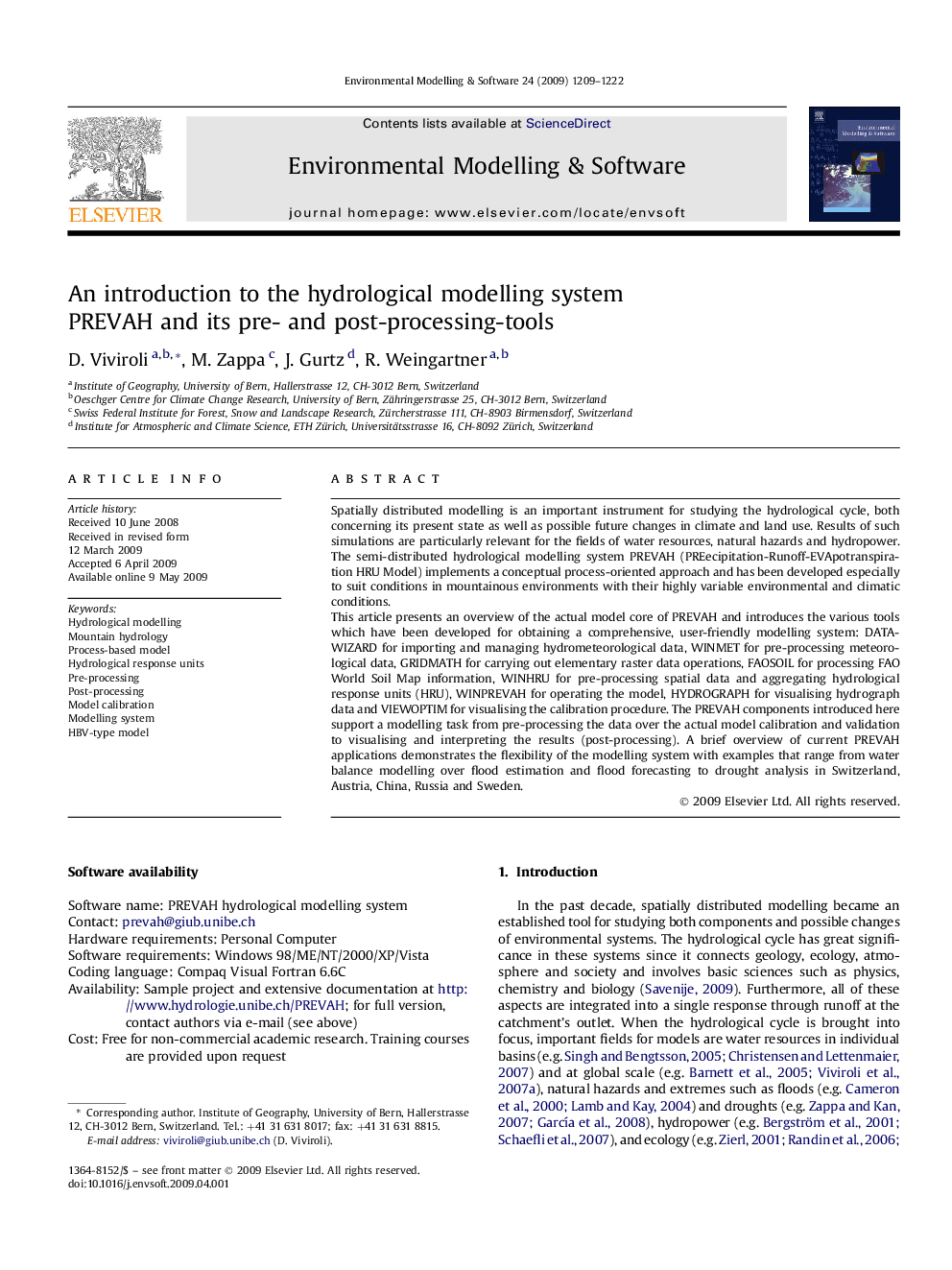| کد مقاله | کد نشریه | سال انتشار | مقاله انگلیسی | نسخه تمام متن |
|---|---|---|---|---|
| 570019 | 876704 | 2009 | 14 صفحه PDF | دانلود رایگان |

Spatially distributed modelling is an important instrument for studying the hydrological cycle, both concerning its present state as well as possible future changes in climate and land use. Results of such simulations are particularly relevant for the fields of water resources, natural hazards and hydropower. The semi-distributed hydrological modelling system PREVAH (PREecipitation-Runoff-EVApotranspiration HRU Model) implements a conceptual process-oriented approach and has been developed especially to suit conditions in mountainous environments with their highly variable environmental and climatic conditions.This article presents an overview of the actual model core of PREVAH and introduces the various tools which have been developed for obtaining a comprehensive, user-friendly modelling system: DATAWIZARD for importing and managing hydrometeorological data, WINMET for pre-processing meteorological data, GRIDMATH for carrying out elementary raster data operations, FAOSOIL for processing FAO World Soil Map information, WINHRU for pre-processing spatial data and aggregating hydrological response units (HRU), WINPREVAH for operating the model, HYDROGRAPH for visualising hydrograph data and VIEWOPTIM for visualising the calibration procedure. The PREVAH components introduced here support a modelling task from pre-processing the data over the actual model calibration and validation to visualising and interpreting the results (post-processing). A brief overview of current PREVAH applications demonstrates the flexibility of the modelling system with examples that range from water balance modelling over flood estimation and flood forecasting to drought analysis in Switzerland, Austria, China, Russia and Sweden.
Journal: Environmental Modelling & Software - Volume 24, Issue 10, October 2009, Pages 1209–1222